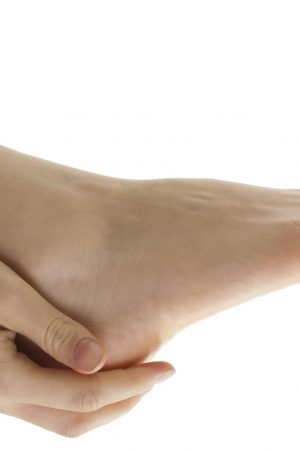Cracked heels, also known as heel fissures, are a common foot problem, especially during the warm weather months when people enjoy wearing sandals and flip flops.
When the skin around the heels becomes thickened or dry, it loses it’s suppleness and elasticity, and can split under simple pressures such as that from walking. This can lead to unsightly, painful and even bleeding, cracked heels. This can further be made worse in people who have a large fatty pad on the sole of their feet, which under pressure requires more elasticity in the skin to expand without cracking. Other causes of increased pressure includes prolonged standing, pregnancy or excess weight.
Causes
- Walking around barefooted or in footwear such as thongs, sling or open backed sandals which drys out the feet
- Skin type is often genetic. Some heels get thick very thick callus but don’t crack where as others have no callus at all but crack badly after a day on the beach.
- Long standing at work or home, especially on hard floors
- Increased weight which causes increased pressure on the heels causing callus. With increased weight the heel is also required expand more and hence can often crack more.
- Ill fitting shoes or sandals that don’t support the heels from expanding sideways under pressure.
- Unhygienic circumstances or conditions as well as fungal infections/tinea
- Unhealthy, dry scaly skin that can be caused by climate, such as low humidity during dry summers or cold winters
- Deficiency of vitamins, minerals, zinc and malnutrition.
- Hormonal Conditions such as thyroid or estrogen imbalances.
- Circulation problems
Risk Factors
The two biggest risk factors for cracked heels are diabetes and obesity, notes Mauser. Diabetics are likely to experience cracked heels because damage to nerves in the feet from uncontrolled blood sugars can cause dry skin. People with diabetes are even more likely to sustain an infection from cracked heels than non-diabetics. If you are diabetic, it is important to examine your feet frequently for signs of cracks or infection.
Obesity increases your chances of having cracked heels because there is even more weight on the heel pad, which causes it to expand out further. Dry skin is unable to handle the added pressure and cracks.
During the winter months, however, anyone can have dry, cracked heels. Regularly taking long, very hot baths and showers can also exacerbate this condition. Additionally, people who don’t regularly moisturize their feet with a good, oil-based lotion or moisturizer are more likely to experience heel fissures. Not drinking enough water and poor nutrition are also risk factors for cracked heels.
Remedies
For most people, having cracked heels isn’t serious. It may cause discomfort when going barefoot. In some cases, cracks in the heels can become very deep and cause pain. Read on to learn about the best home remedies for treating and preventing cracked heels.
Heel balms or thick moisturizers
The first line of treatment for cracked heels is using a heel balm. These balms contain ingredients to moisturize, soften, and exfoliate dead skin. Look out for the following ingredients:
- urea (Flexitol Heel Balm)
- salicylic acid (Kerasal)
- alpha-hydroxy acids (Amlactin)
- saccharide isomerate
Soak and exfoliate your feet
The skin around cracked heels is often thicker and drier than the rest of your skin. This skin tends to split when you apply pressure. Soaking and moisturizing your feet can help with this. Here are some tips.
For a foot soak:
- Keep your feet in lukewarm, soapy water for up to 20 minutes.
- Use a loofah, foot scrubber, or pumice stone to remove any hard, thick skin.
- Gently pat your feet dry.
- Apply a heel balm or thick moisturizer to the affected area.
- Apply petroleum jelly over your feet to lock in moisture. Put on socks to avoid spreading any grease around.
Avoid scrubbing your feet when they’re dry. This increases your risk for damaged skin.
Honey
Honey may work as a natural remedy for cracked heels. According to a 2012 review, honey has antimicrobial and antibacterial properties. Research shows that honey can help heal and cleanse wounds, and moisturize the skin. You can use honey as a foot scrub after a soak, or apply it as a foot mask overnight.
Coconut oil
Coconut oil is often recommended for dry skin, eczema, and psoriasis. It can help your skin retain moisture. Using coconut oil after a foot soak could be a good option, too. Coconut oil’s anti-inflammatory and antimicrobial properties may your cracked heels if they’re prone to bleeding or infections.
Vegetable Oil
A variety of vegetable oils can be used to treat and prevent cracked heels. Olive oil, sesame oil, coconut oil or any other hydrogenated vegetable oil will work. For best results, use this remedy before going to bed to allow ample time for the oil to fully penetrate your skin.
Rice Flour
Exfoliating the skin on your feet and heels will help remove dead skin, thus preventing cracking and dryness. Rice flour can be used a part of a homemade exfoliating scrub.
Lemons
The acidic property in lemons can be very effective in softening rough skin that leads to cracking.
Bananas
Ripe bananas are one of the cheapest home remedies for cracked and dry heels, thanks to their moisturizing properties.



